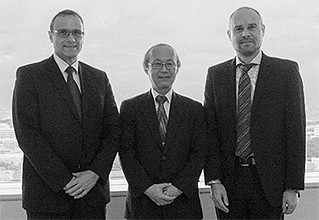Part 1
The amount of software in formerly largely hardware-dominated products has continuously increased over time. Software is perceived as an enabler of new, innovative services and business models in all sectors of industry and society. Systems Engineering is an interdisciplinary approach that considers both the business and the technical needs of all customers. Being able to establish appropriate Systems Engineering practices in the organization is crucial for staying competitive and for developing innovative products on time, within budget, and with a high level of quality.
Part 2
Our goal was to collect the state of the practice regarding Systems Engineering in the German-speaking region, focusing on challenges and solution approaches in terms of best practices (work processes, methods, and tools). The scope of the study was on Systems Engineering practices across different domains and was not specialized to any single domain. Even though we found some already existing surveys and studies related to this goal, none fitted our scope completely.
Part 3
Overall, 42 invitations were sent to people from 34 different organizations. 22 of them agreed to be interviewed. Finally, 20 interviews with people from 18 different companies were performed, including experts from, e.g., Airbus DS Electronics and Border Security, ETAS GmbH, Hella KGaA Hueck & Co., Robert Bosch GmbH, and ZF TRW Automotive Holdings Corp. The key outcomes are as follows:
Product Engineering Trends: Companies are mainly driven by the increased complexity of system requirements (aspect stated by 60%) as well as by the ever larger number of product variations demanded by their customers (stated by half of the companies).
Importance of Systems Engineering: On a scale from 1 (not important) to 10 (essential for survival), the average importance of Systems Engineering is 7.6 and will increase to 8.5 within the next five years.
Systems Engineering Challenges: 80% stated that change management within the organization is the no. 1 challenge, followed by managing complex requirements and interfaces.
Systems Engineering Process: The larger organizations basically cover every process area of ISO/IEC 15288 and 12207, whereas the SMEs have a clear focus on the technical and implementation processes.
Systems Engineering Practices: Among the already established practices, the companies largely (close to or more than 50%) picked methods, techniques, and approaches related to model-driven development, requirements engineering, test-driven development, and verification and validation.
Specification Languages and Tools: More than 80% of the participants referred to UML as the major relevant specification language. Large organizations tend to use SysML as a more specific language for system modeling. More than 50% of the Systems Engineering tools mentioned were related to modeling different aspects of the overall system or the software as part of the system.
Improvement Potential: The greatest improvement potential for Systems Engineering lies in increased virtual engineering and better integration of the tool chains used, with 50% of the participants mentioning each of these areas.
Systems Engineering Capabilities: The majority of organizations/units rely on internal and external training programs to improve their capabilities related to Systems Engineering. Furthermore, participation in Systems Engineering conferences was mentioned.
Part 4
Based on the key outcomes of the study, a couple of recommendations and areas of activity can be derived for organizations striving towards Systems Engineering:
Organizational Development: Companies should establish a proper change management strategy for introducing Systems Engineering practices and they need to build up appropriate competencies in Systems Engineering in general and Software Engineering in particular. Especially the larger organizations need to think about managing their portfolio of different Systems Engineering projects.
Technical Development: Companies should develop and integrate a Systems Engineering approach including all stakeholders and establish practices in the areas of System Requirements Engineering, Model-Driven Systems Development, and System Verification and Validation. More mature companies should prepare to establish practices in the areas of Virtual Systems Engineering and Integrated Systems Engineering Tool Chains.
Part 5
For all of the five technical development practice areas mentioned above, there already exist established techniques, methods, and tools that cover substantial areas of activity and are applied and have been evaluated in practical settings, or there are techniques, methods, and tools that are currently under development in national and international research and development projects and initiatives.

